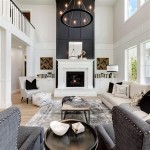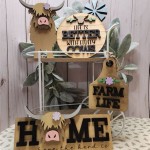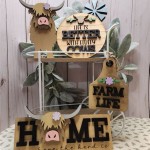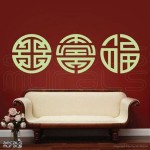Decorating Side Tables in the Living Room
Side tables are often overlooked, yet they play a crucial role in a living room's overall aesthetic and functionality. These versatile pieces offer valuable surface area for everyday items and decorative accents, bridging the gap between furniture pieces and tying the room together. Thoughtful styling can elevate these often-underutilized surfaces into captivating focal points. This article explores various approaches to decorating side tables, offering practical advice and inspiring ideas to enhance living room design.
Before embarking on the styling process, one must consider the existing décor. The side table's design should complement the room's overall style, whether traditional, modern, bohemian, or minimalist. A rustic wooden table might suit a farmhouse-style living room, while a sleek metal and glass table might be more appropriate for a contemporary setting. The size and shape of the table are equally important. A smaller table might suffice in a compact space, while a larger table can accommodate more substantial decorative elements in a more spacious room.
Lighting is a key element in side table décor. Table lamps provide both functional illumination for reading and ambient lighting for the room. The lamp's size and style should be proportional to the table's dimensions. A tall, slender lamp might work well on a narrow table, while a wider, shorter lamp might be more suitable for a larger surface. The lampshade can also contribute to the overall aesthetic, adding texture, color, and pattern to the arrangement. Beyond table lamps, other lighting options include candles in decorative holders or small string lights draped around the table's base, adding a touch of warmth and ambiance.
Decorative objects add personality and visual interest to a side table. These could include items like sculptures, vases, decorative boxes, or small framed photographs. When selecting decorative objects, varying heights and textures create a more dynamic and visually appealing display. Grouping objects in odd numbers, such as three or five, often creates a more balanced and pleasing composition. It's important to avoid overcrowding the table, leaving some negative space to maintain a sense of visual balance and prevent a cluttered appearance.
Books and magazines offer both decorative and functional elements to a side table. A stack of books can add height and visual interest, while also providing reading material within easy reach. Choosing books with attractive covers that complement the room's color scheme can enhance the overall aesthetic. A decorative tray can corral smaller items like remotes or coasters, keeping the surface organized and clutter-free while adding a stylish touch.
Incorporating natural elements, such as plants or flowers, can bring life and vibrancy to a side table. A small potted plant, a vase of fresh flowers, or even a collection of dried botanicals can add a touch of nature to the space. The size and type of plant should be chosen based on the table's size and the available light in the room. A low-maintenance plant might be a better choice for those without a green thumb, while a more demanding plant might be suitable for those willing to invest the time and effort in its care.
The use of textiles can also enhance the décor of a side table. A small decorative runner or placemat can add texture and color to the surface, while a draped throw can soften the look and add a touch of warmth. These textiles should complement the existing décor and color scheme of the room. The texture and pattern of the textile can also add another layer of visual interest to the arrangement.
Maintaining balance and proportion is crucial when decorating a side table. Avoid overloading the surface with too many items. The goal is to create a visually appealing and functional space. Regularly editing and rearranging the items on the side table can help maintain a fresh and dynamic look, preventing the display from becoming stagnant. Consider rotating decorative objects seasonally or based on personal preference to keep the space feeling refreshed and engaging.
Functionality should also be a primary consideration. While aesthetics are important, the side table should also serve its practical purpose. Ensure there is enough space for everyday items like drinks, remotes, or reading glasses. The placement of the table should also be considered, ensuring it is easily accessible from the seating area and doesn't obstruct traffic flow in the room. The height of the table should be proportionate to the surrounding furniture, ideally level with the armrests of nearby chairs or sofas.
Ultimately, decorating a side table is an opportunity for personal expression. There are no hard and fast rules. The goal is to create a visually appealing and functional space that reflects individual style and complements the overall design of the living room. Experimenting with different arrangements and incorporating various decorative elements can help achieve a unique and personalized look.

Home Decor 101 How To Decorate End Tables Living Room Table Side

How To Style An End Table Like A Pro Stonegable

Side Tables And End A Guide To Decorating With Them

Home Decor 101 How To Decorate End Tables The Turquoise

27 Coffee Table Decor Ideas How To Style A Modern

33 Simple And Stunning Ideas For Side Table Décor

Side Table Decor Ideas 33 Best Stylish Functional End Tables For Your Home Parachute Blog

9 Gorgeous Accent Table Décor Ideas Living Spaces

Simplified Decorating End Table Decor Ideas Bless Er House

Home Decor 101 How To Decorate End Tables The Turquoise







